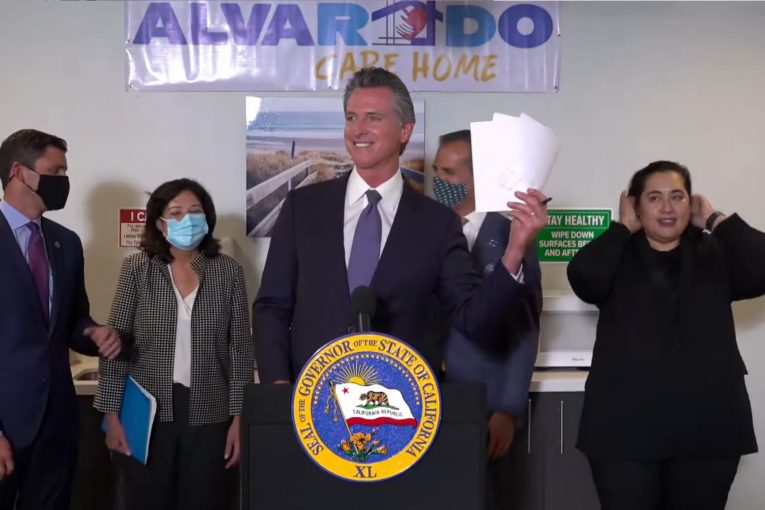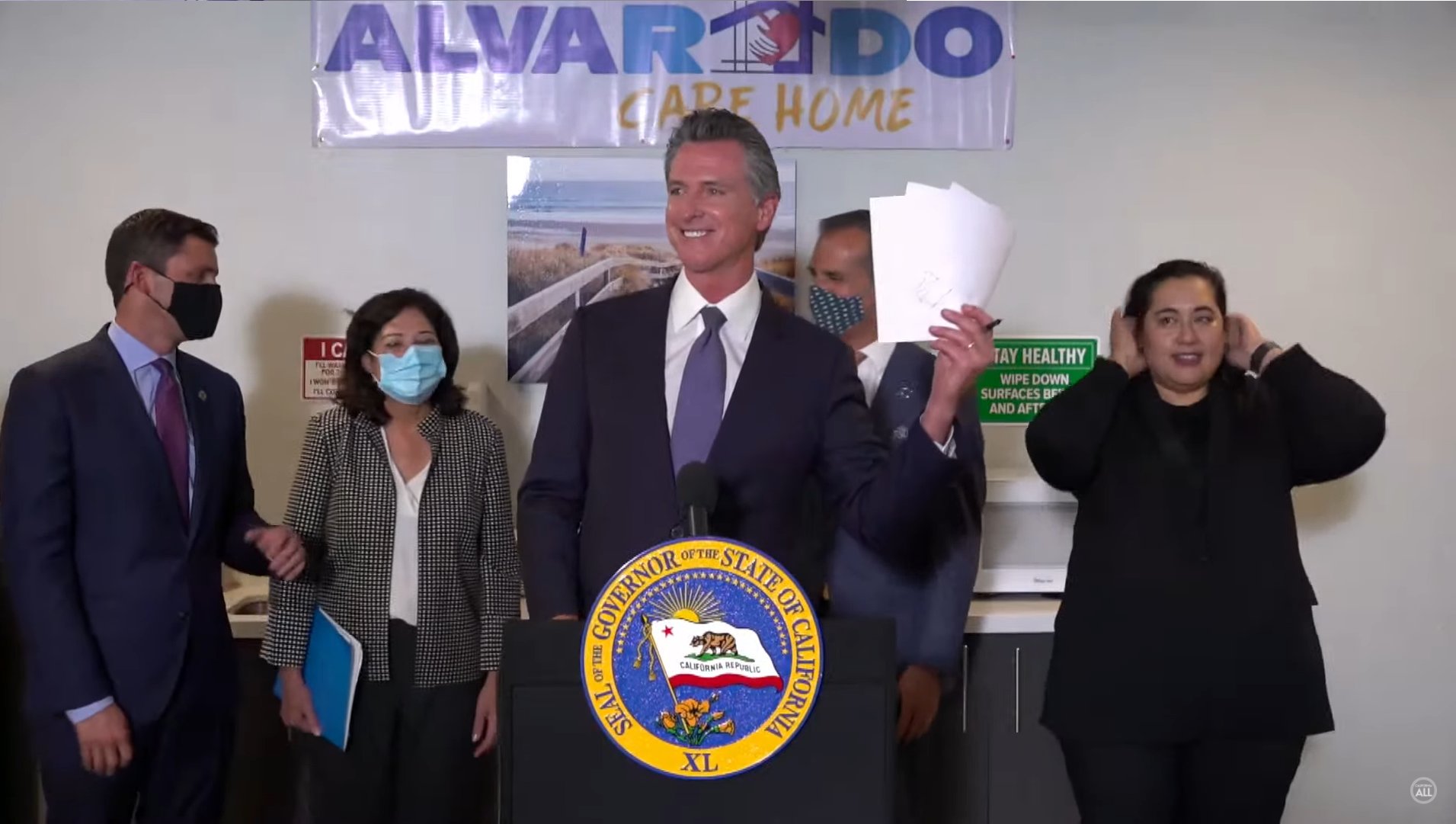

By David M. Greenwald
Executive Editor
Los Angeles, CA – Beginning well before the pandemic, a huge issue facing California was homelessness, a crisis that was clearly exacerbated by multiple factors—high housing costs, a failure to provide adequate mental health services and a burgeoning substance abuse problem.
Recognizing that homelessness needs to be tackled in many way, the governor this week has signed a package that would create at least 44,000 “homeless units” among 84,000 new affordable housing units in the $22 billion package, what the governor’s office is calling “the largest investment of its kind in state history.
“We live in a situational world where people want to see results immediately,” Governor Newsom said during a press conference Wednesday. “But when it comes to these issues, it takes years and years to see those results.”
But this is not just a housing bill package. Instead, it is a “multi-pronged approach to homelessness (which) includes major investments to strengthen California’s mental health care system.”
The governor signed this package of bills on Wednesday, while visiting an acute board and care home run by Los Angeles County.
According to the governor’s office, “Altogether, the efforts highlighted today represent a comprehensive strategy to get more Californians off the streets faster than ever before and into the health services and housing they need —all at a fraction of the cost of previous efforts.
“We can’t nibble around the edges of the homelessness crisis, we need to implement bold, transformative solutions—investing more money than ever before to get folks off the street and provide the mental health and other services they need to stay off the streets,” said Governor Newsom.
“Today’s legislation, along with our overall $22 billion housing affordability and homelessness package, will move the needle on creating more housing for the homeless and will allow us to tackle the homelessness crisis in ways California has never done.”
Among the bills signed was AB 1220 by Assemblymember Luz Rivas (D-Arleta) which reforms the former Homeless Coordinating and Financing Council, renaming it the California Interagency Council on Homelessness, and bolsters the Council’s powers through new data mandates and oversight authorities.
“In California, there are enough homeless children to fill Dodger Stadium five times,” said Assemblymember Rivas, a reference to a 2020 UCLA study. “We have to end that.”
AB 977 by Assemblymember Jesse Gabriel (D-Encino) implements new data mandates under the state’s Homeless Management Information System, allowing policymakers to better track and evaluate the effectiveness of homelessness funding around the state.
“The California Interagency Council on Homelessness will also be the entity responsible for receiving, reviewing and ultimately approving homelessness plans submitted by cities, counties and Continuums of Care as part of the state’s $2 billion local homelessness assistance package through the Homeless Housing, Assistance and Prevention Program (HHAP),” the governor’s office said. “Starting now, local governments must commit to quantifiable goals across six standardized metrics and make progress towards meeting or exceeding them in order to receive their full share of HHAP funding.”
According to the governor’s office, these bills, “along with the four housing bills signed earlier this month and the housing affordability bills signed yesterday, represent the most comprehensive strategy to address the homelessness and housing affordability crisis in state history. California is investing an unprecedented $22 billion to tackle these systemic issues, with $12 billion allocated for homelessness and behavioral health services to help get tens of thousands of people off the streets or avoid homelessness altogether.”
They continued, “Combined, the funding will lead to the creation of over 84,000 new affordable homes for Californians, including over 44,000 new housing units and treatment beds for people exiting homelessness.”
The state is continuing to fund Homekey as well, with $5.9 billion to add more than 35,000 new housing units.
“Governor Newsom is especially focused on rebuilding the state’s portfolio of housing and treatment options for people with severe behavioral health challenges. The California Comeback Plan calls for the biggest expansion of this kind of housing and treatment since Governor Reagan began dismantling California’s mental health system in the late 1960s,” the governor’s office said. “To that end, $3 billion of the homelessness investment is dedicated to housing for people with the most acute behavioral and physical health needs and will create approximately 22,000 new beds and treatment slots.”







Actually, we are seeing the result of years of “investment” in the crisis – it’s called more so-called homeless. Maybe at some point, when throwing billions at the problem increases so-called homelessness yet again, people will realize that we’re going about this backwards and enabling the problem we are trying to solve, and simply feeding the Homelessness Industrial Complex.
Now that I’m in favor of investing in, if it is done “right”, and that’s a complex “if”. It may be difficult to keep the Mental Health Industrial Complex from occurring like the Homlessness Industrial Complex and the Prison System Industrial Complex. Mental health services must be provided via some form of government subsidy as there is no private incentive to help the mentally ill. So we as a society must step up, unless we think that having beings wandering city streets yelling obscenities at people who aren’t there (as one example) is good for us or them.
And then there’s how we ‘deal’ with the addicted, and even more complex how we ‘deal’ with those addicted and with severe mental health problems. And I’m dropping the curtain on that show as that’s more potatoes than this stew pot can hold . . .